Las T-shaped people are usually able to adapt to the demand of variable load work.
Product delivery teams are asked to do many different things, each of which requires different skill sets. A T-shaped person is capable of performing many tasks and can switch from one to another quickly and easily, allowing him or her to be an effective team member in any situation. Ultimately, the ability to move between different areas of expertise makes a T-shaped person a valuable asset to any organizationBill Moggridge, industrial design specialist and creator of the first computer, is credited with creating the T-SHAPED PEOPLE concept together to his collaborators at IDEO. He described them as people who "have a depth of knowledge in one area and a breadth of knowledge in many areas." Bill appreciated the value of having specialists who could also contribute to other aspects of a given project, allowing for greater collaboration and faster resolution of problems.In short, T-shaped people are capable and knowledgeable in many areas while being experts in at least one. They offer a wide range of skills and knowledge and are valuable team players. They are essential for project teams that need to address complex problems with speed, precision and agility. T-shaped personas provide the versatility needed to succeed in today's changing business landscape.
The Type T people are increasingly in demand in the world of work.
Having in-depth knowledge in at least one area of specialization, and knowledge or some skill in many other areas, makes them uniquely equipped to navigate the ever-changing business landscape. They can make very well-rounded contributions to your team and are valuable assets that any organization should strive to acquire.

5 recommendations to boost people's knowledge in shape of T or T-shaped people
- Build a culture of collaboration: Encourage open dialogue and conversation among members team to extract the value that each T-shaped person can add to your team
- Develop a cross-functional mentoring program: Establish a mentoring program that allows collaboration between teams and provides training in different disciplines, encouraging the exchange of knowledge.
- Encourage training and development: Invest in the development of people in a T shape, providing them with the resources and support they need to create a truly diverse team with valuable skills, remember to promote continuing education as an organization.
- Foster an environment of innovation: Create an environment that encourages experimentation and risk-taking, while rewarding success. This will help keep your organization as an innovator in its sector.
- Embrace diversity: Embrace the diversity of backgrounds, experiences and perspectives to create an open-minded team willing to think innovatively. Having different people with a variety of skills will lead to better ideas and faster problem resolution
By adopting the concept of T-shaped people, and understanding the value they bring to a team, you can be crucial to the success of an organization. By investing in people development, organizations can create more efficient and innovative teams that can tackle even the most complex problems with ease. With their versatility and experience, people are true assets in today's workplace and an essential part of a digital transformation process.







